
With an estimation of 12 million to 24 million ecommerce sites across the entire globe, the ecommerce world is more competitive than ever.
These days, it's getting harder to capture people's attention, and it's not helping that consumers are constantly bombarded with all sorts of ads wherever they go online. Hence, personalization has become a leading trend in ecommerce.
However, despite the plethora of ecommerce brands out there, some of these ecommerce brands’ marketing strategies deliver a higher ROI over others. Why? Because they go the extra mile.
To appeal to humans, you need to engage their traditional senses in order to affect their emotions and influence their purchasing decisions.
And that's where sensory marketing comes in. It allows you to take advantage of the human senses to make your marketing approach and strategy more effective.
However, sensory marketing seems more effective in traditional marketing compared to digital marketing, where the physical experience, for the most part, is absent.
But how can you, as an ecommerce brand, utilize this marketing tactic to increase sales and improve your brand image?
Read on to find out.
What is Sensory Marketing?
Sensory marketing is the idea of appealing to at least one of the five traditional human senses with different marketing tactics in order to make consumers take intended actions.
Humans are more emotional, rather than rational beings. Therefore, consumerism has a lot more to do with people's emotions, which explains why impulsive buying is on the high.
So, whatever feels, sounds, looks, tastes and smells pleasing to us gets our utmost attention and eventually our money.
Benefits of Sensory Marketing for Ecommerce Brands
- It captures and retains the attention of a customer in a world where the average human being now has the attention span of a goldfish.
- It gives your brand a memorable personality to your customers.
- It grants your customers a delightful shopping experience because of all the emotions that light up.
- It creates loyalty, which generates repeat sales.
- Sensory marketing puts you ahead of your competitors that don't include it as part of their marketing strategy.
- It makes your marketing strategy more effective.
So, how can your ecommerce brand get started with sensory marketing?
It is important to note that the more senses you target at a time, the more effective your strategy.
Touch
Capturing the sense of touch digitally is the most difficult to pull off amongst the other senses.
The best way to appeal to the sense of touch virtually is by engaging a consumer's imagination, which is a powerful element in the human mind.
Here are three ways to pull this off.
1. Utilizing the Sense of Sight
The sense of sight affects the remaining senses, so through the visuals of your product, consumers can imagine and visualize what your product feels like.
Major phone brands like Huawei use this tactic to showcase the sleekness of their phone products. Here's an example:
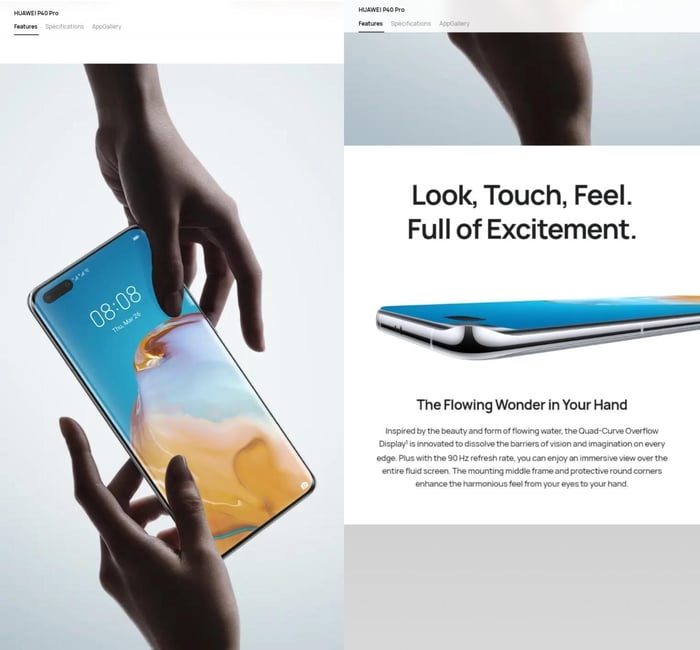
From the image above, you can already imagine the feeling of the phone in your hands.
Here's a quote from the marketing video of one of their products: "It doesn't just look good, it feels good."
Then, they went ahead to showcase the packaging.
2. Using Descriptive Words
Words are also powerful in playing with our imaginations to trick us into thinking of how a product feels.
From the example above, Huawei used words like the "flowing wonder in your hands" which translates into its delicate and sweet touch.
Here's an example from Taylor Stitch, an ecommerce clothing brand:

From the image above, they used "Buttery-soft” and “Sturdy. Soft." instead of just "soft" to describe the fabrics of the two products.
3. Establishing a Memorable Impression
As a first impressions, it is impossible for a customer to get the feel of a product. However, you can generate repeat customers through the sense of touch if your products mirror the following:
- They’re created with high-quality materials.
- The packaging is soft and delicate on the hands, easy to unwrap, and dispose of.
When your products and packaging create a memorable feeling with a customer, there's a likelihood of them coming back.
Technologies like AR and VR, which are discussed below, can also provide mental stimulation for consumers to give them a sense of touch.
Sight
This is the main sense that ecommerce brands have been using to convince prospective customers. Humans are highly influenced by what they see, therefore this takes the driver’s seat in sensory marketing for ecommerce.
Here are ways you can appeal to a consumer's sense of sight:
1. Aesthetically Pleasing Website Design
94% of first impressions about your ecommerce brand are related to your site’s web design.
Therefore, make your ecommerce website as visually pleasing as possible. In fact, 66% of people prefer to look at a beautifully designed website if given 15 minutes to consume content.
Here's an example of a beautifully designed ecommerce site called Partake Foods, a snack brand.

From the image above, you can't help but appreciate the beautiful imagery and color palette on the website.
2. High-Quality Images
This one is a no brainer. The quality of your product images should be top-notch and visually appealing.
Each important shot and angle of your products should be zoom-able, clear, and beautifully displayed.
Also, all product details should be showcased because the more illustrative your images are, the more effective.
To achieve this, you need three things:
- A high-quality camera
- A great photo editor
- A creative setting
Here's an example from BioLite, a multipurpose gear ecommerce brand:
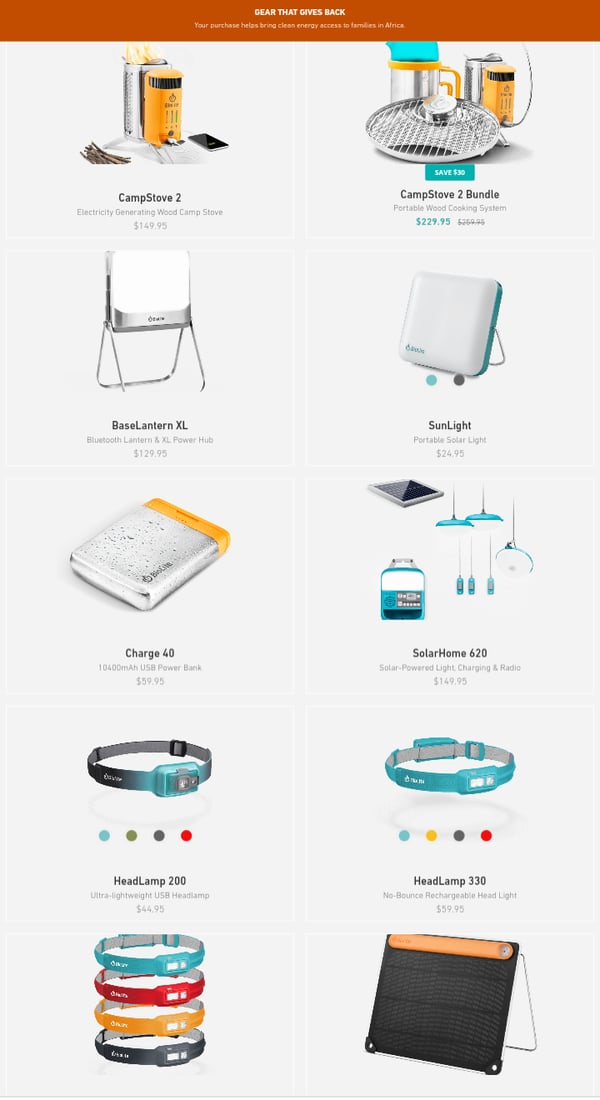
Look at the beautiful display of products. I clicked on one of the products in the image above.

On the product page, the product was showcased in different angles. Additionally, the product was displayed in action.
Bonus Tip: Bring your pictures to life by taking pictures in natural settings with your products being used. Ditch the conventional lifeless and stoic setting.
Here's another example from BioLite:

I clicked on the product in the image above, and on the product page, images taken in natural settings were displayed.
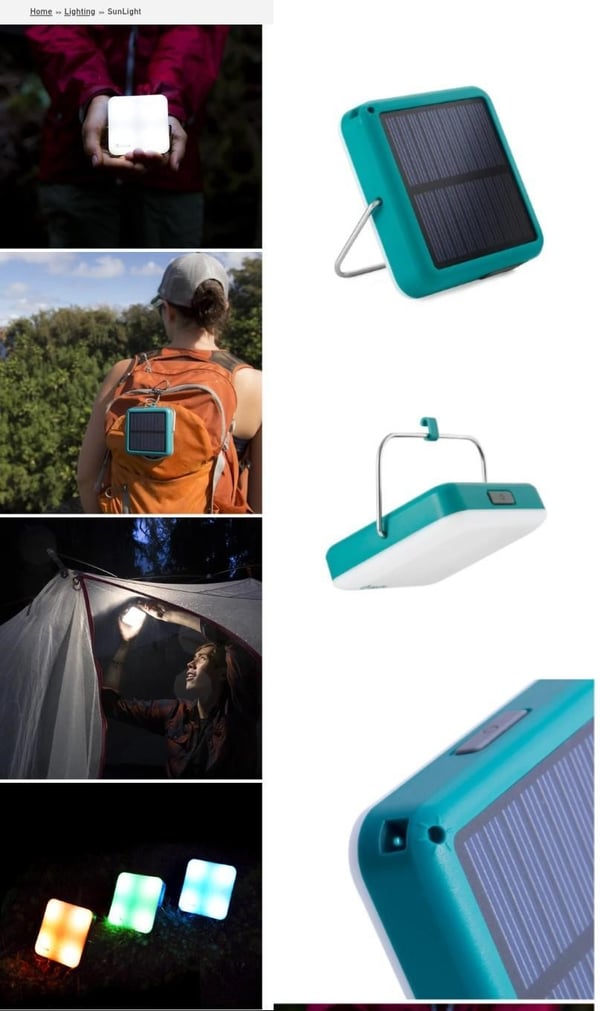
This type of image display is undoubtedly more appealing to our sense of sight as it gives a more relatable and practical illustration.
3. Videos
Marketing videos are one of the best ways to capture and retain a consumer's attention. Videos don't only engage the sense of sight, but they also trigger other senses like sound. Shoppable videos are a new addition to the traditional approach to video marketing
Create videos that illustrate your products in action and explain its benefits too. One of the most effective ways to do this is to partner with an influencer.
This way, they can market your products through videos in a personal and relatable manner.
Here's an example from Casetify, a phone case ecommerce brand:
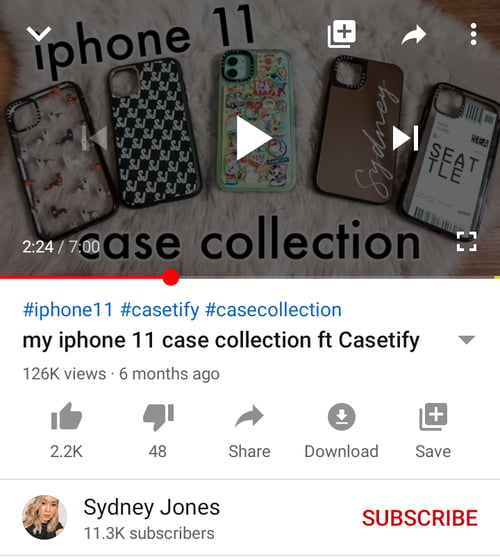
They partnered with an Influencer named Sydney Jones, who showcased her different iPhone case collections in a YouTube video. She also explained to her audience how can get their customizable cases just like hers.
This type of video will have more impact than a branded marketing video because consumers are seeing the experience from someone they trust and relate to.
Sound
The things we hear on a frequent basis create a sense of familiarity. You want to have a unique sound designated to your brand to enhance the consumer shopping experience.
This is a tricky one though because you want to make sure you give off the right vibe and not annoy people on your site or online store with intrusive sounds.
You can include a sound when a consumer adds a product to their cart, clicks on any product image, or after completing a purchase.
It gives a reassuring effect that an action has been taken, and also an interactive shopping experience.
Here's an example from MasterCard, a financial payment ecommerce brand:

MasterCard uses sonic branding to give its consumers an identity through sonic sounds. Consumers hear the sonic sound after completing a transaction with their MasterCards.
This notifies their consumers that their transactions were successful. The sonic sound builds a sense of familiarity that engages consumers when they transact online.
It is worthy to point out that the sound comes with a visual presentation of the MasterCard logo intersecting. This is engaging the senses of sight and sound at once.
MasterCard, after realizing the success and positive effect of this strategy, took it a step further. They collaborated with a singer Nadine Randle to release a single called "Merry Go Round" to further enhance their sonic branding.
Bonus Tip: You should include music when displaying your marketing posts on Instagram Stories.
Smell
For obvious reasons, consumers can't tell how a product smells during their digital shopping experience.
This is where copywriting skills come into play, as descriptive and flattering words can illustrate the way a product smells to make your marketing more effective.
Also, when you use words associated with something consumers have previous experience with, they can easily make sense of the smell of your product.
Here's an example from Function of Beauty, a haircare ecommerce brand:

They ask their consumers to customize the fragrance of their products using fruity or floral terms to describe the scent.
Additionally, you can use the sense of sight to appeal to the sense of smell.
For example, back to the use of influencers, they can make videos that talk about your products and convey how they have a pleasing scent.
In your marketing videos, you can also use an animation that signifies a good sense of smell.
Taste
Just like the sense of smell, consumers can't tell what your products taste like, so you can only have an effect on their imaginations.
Also, the usage of descriptive words on how it tastes and the mention of the diverse ingredients that are present in the product can make your customers imagine how your product tastes.
Here's an example from Pipsnacks, a snack ecommerce brand:
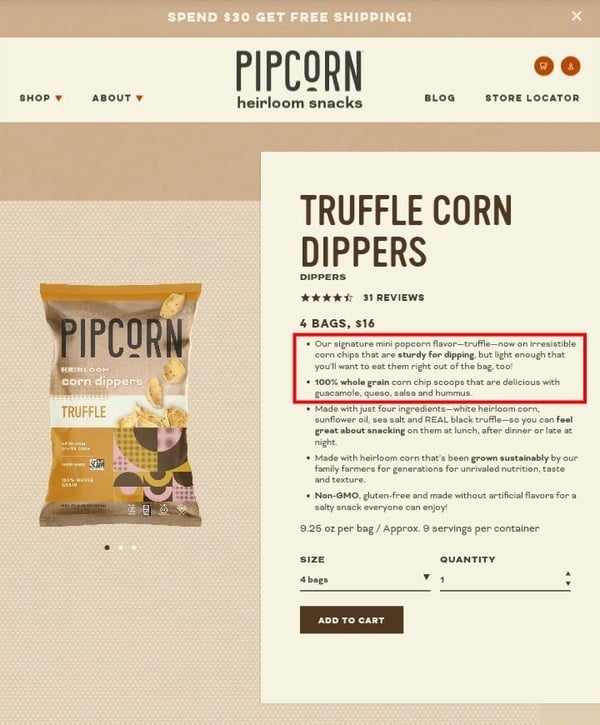
They mentioned how the corn truffles are sturdy for dipping, plus how it's going to go well with guacamole and other combos.
This description is already giving you all sorts of taste imagination that will prompt you to get your hands on the corn truffles.
Another example is from Cuvee Coffee, an ecommerce coffee brand:
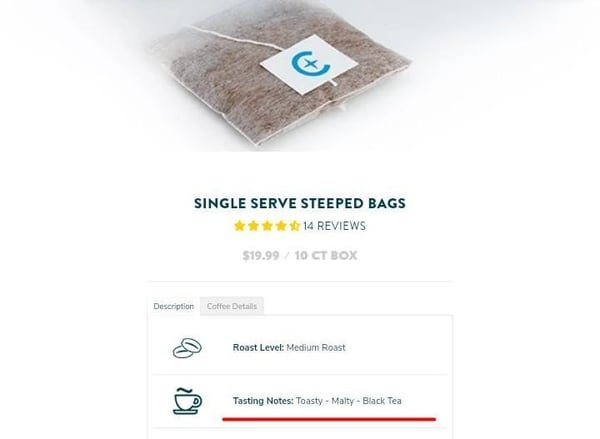
In the description of their products, they include tasting notes that convey what the coffee tastes like in familiar and simple terms.
They use terms like “Toasty,” “Malty,” and “Black Tea.”
Advanced Technologies for Sensory Marketing
The following are different technologies available to help you with sensory marketing.
1. Augmented Reality
Augmented reality takes digital sensory marketing a step further, as you can utilize this advanced technology to give your consumers a real-time experience with your products.
This is highly appealing to the sense of sight, as consumers are given an optimized visual, and an almost real experience, in order to influence their purchasing decisions.
For example, Home Depot, a home improvement brand, has an app called "Project Color app" that will show you how paint colors and certain home products will look in your home.

This provides customers with a hands-on, real-time experience that engages their senses.
2. Virtual Reality
Virtual reality, or VR, is another form of technology that aims to mimic real-life experiences. Ecommerce brands use virtual reality to appeal to different senses at a time.
VR consumers get an immersive, interactive, and real life-like experience. But VR doesn't just let your customers view products – it also lets them in on the action.
For example, Vroom, an automotive ecommerce brand, utilizes VR to give consumers an interactive car shopping experience.
Vroom has a VR based auto-showroom that allows prospective customers to wear a Google Cardboard headset to browse 15 different car models.

This grants customers an immersive experience including the sound of real car engines, 360-degree view test drives, and more – all from the comfort of their home.
Conclusion
Sensory marketing can fuel the brand's marketing strategies of ecommerce brands if implemented creatively.
You don't have to operate a brick and mortar business to take advantage of the five human senses. As an ecommerce business, you can use sensory marketing to provide a similar experience.
Draw inspiration from the five senses and get creative on what can do to stimulate these senses in ways that influence consumers' behaviors in the digital world.
Furthermore, as technology such as AR and VR continues to advance, sensory marketing will definitely become more effective and easier to implement.
So, get started with sensory marketing using the basics we’ve covered first, and advancing as you go further.





Leave a reply or comment below